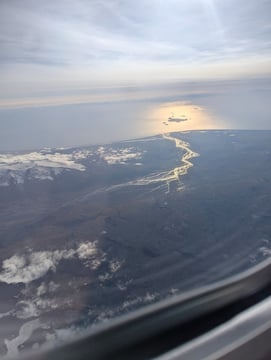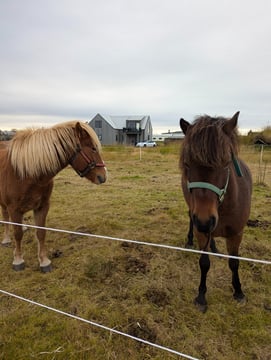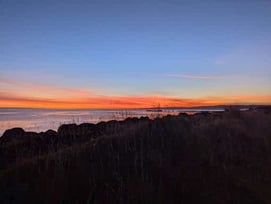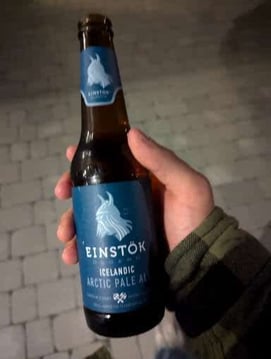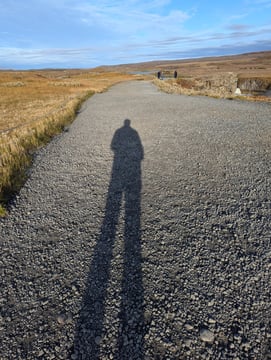My Iceland Experience
My little documentary about traveling around the golden circle in iceland!
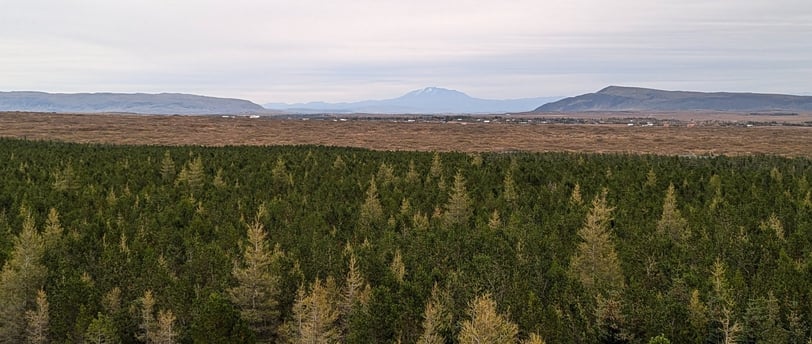

My Journey Through Iceland
Dear Readers,
In this blog post, I want to share my journey through Iceland with you. Back in September 2024, I had decided months in advance to visit this land of fire and ice. My inspiration to travel to Iceland came from a travel vlogger on Instagram who shared an array of breathtaking posts about the country. I began following her travel experiences more closely until one day she announced a group trip. Since I wasn’t used to traveling alone at that time, I naturally wanted to take advantage of this opportunity and arranged for some vacation leave. But as fate would have it, by the time my leave was approved, the group tour was already fully booked.
“Great,” I thought to myself sarcastically, “now you’ll have to travel alone—this should be fun.” It was especially exciting (and nerve-wracking) for me because I didn’t know how well I’d cope with being by myself for an extended period. You could say it was a bit of a self-experiment. Without overthinking it, I booked my flight as soon as my vacation leave was confirmed. Of course, there was a lot more preparation involved, which I’d like to briefly touch on here.
What does one typically need for a four-day trip to Iceland? I packed my backpack with the essentials: clothing, chargers, my journal, and, most importantly, my boarding pass and credit cards. I also brought along a transitional jacket which, as I would soon find out, wasn’t exactly ideal for Iceland. A week before my flight, I rented a car to ensure I’d be mobile. And yes, renting a car is something you should definitely consider unless you happen to be part of a bus tour.
With everything packed, I headed to Berlin Airport. After checking in, I sat on the plane and began jotting down my first thoughts in my journal. After about 3 ½ hours of flying, I finally saw land again: a vast tundra of reflective rivers, mountains, and sparse flora. Once I arrived at the airport, I headed straight to the car rental desk.
For the car rental, I used Opodo, and my provider was Budgetcars. At the counter, you simply complete the necessary paperwork and provide your driver’s license and ID. After that, I received the keys and went to find my car. This turned out to be quite the challenge for me because the parking lot was absolutely enormous. Of course, I had a map with a marked "X" showing the car’s location, but I think map-reading just isn’t my thing—I spent 30 minutes looking for the car. I kept pressing the remote’s lock/unlock button until I saw a car blinking in the distance. My ride turned out to be a gray Hyundai i30 with a few dents and scratches, which would be my trusty companion for the trip. The rental cost for four days was only €240, and you’re expected to return the car with a full tank, just as you receive it. There’s also an important clause in the rental agreement that you should clarify and verify: small cars, like my Hyundai, are generally not allowed to drive on F-roads in Iceland.
What are F-roads, you ask? F-roads refer to roads that are often unpaved and consist of gravel. The “F” stands for "Fjall" (mountain), indicating that these roads lead to mountainous and rugged terrain.
If you want to play it safe, I recommend renting an SUV, as they’re typically permitted to drive on F-roads. Unfortunately, I didn’t do this because I wasn’t aware of the clause at the time. To this day, the GPS data thankfully hasn’t been reviewed, nor have I been charged for any damages. Why am I concerned? Well, let’s just say I unknowingly ventured onto a few F-roads.
Back to the story: I found my car, hopped in, and drove straight to my accommodation in Eyrarbakki. The drive was breathtaking—the vast landscapes with towering mountains and moss-covered, green-and-red vegetation left a lasting impression on my first day. But what’s more iconic about Iceland than its landscapes? The countless waterfalls, of course.
I made a brief stop at Hveragerdi waterfall. It was the first of many I’d see during my trip. Complete silence, apart from the sound of cascading water, filled the icy gorge where the waterfall was located. I sat on a rock for a while, eating a piece of salted chocolate I’d bought at the airport. Normally, I’m not a fan of “unusual” flavor combinations, but surprisingly, the chocolate tasted amazing. After a few minutes, I returned to the car as the sun was already setting on the horizon. I made a quick stop for groceries and then continued on the nearly deserted “ghost roads” towards Eyrarbakki.
Compared to Germany, there’s practically no traffic or congestion in Iceland, and there’s a simple reason for this: Iceland only has a population of about 400,000 people, roughly twice the size of Rostock.
When I arrived at my accommodation, a hostel, I was warmly welcomed by fellow backpackers and a school group from America. Exhausted from the day, I had a quick dinner and went to bed. In the bed next to mine, someone was already snoring—they’d apparently fallen asleep before I arrived. As I’d later find out, this was the beginning of a new friendship.
Day 1: Kerid Crater, Waterfalls, Hot Springs & Thingvellir
As soon as I woke up, I jumped in the shower and prepared breakfast: fried eggs and porridge. While showcasing my impressive cooking skills in the kitchen, the school group gradually emerged from their rooms. I had a brief chat with them and discovered that a few students could speak a little German. Most of the class, however, was quite diverse, with kids and teens from all over the world. The teachers were from the USA. I found the concept of an international class really fascinating but didn’t manage to find out the name of the school.
It was their last day, so we said our goodbyes before I set off for my first destination of the day: the Kerid Crater. The drive there was fairly simple, as all the major hotspots were just a few hours away from my accommodation. Parking spots are clearly marked, and you pay the parking fee at a kiosk. If I remember correctly, it was about 200 ISK.
I climbed up the hill, and at the top, I could see the small crater: greenish, icy water shimmered at its center. According to the information board, the crater is about eight meters deep. I spent some time there, walking a few laps around the crater. Of course, I climbed down to touch the water—it was freezing, as expected.
Kerid Crater & Hveragerði
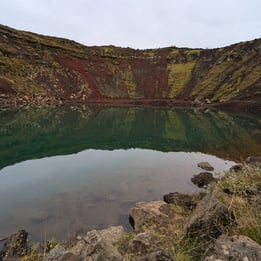
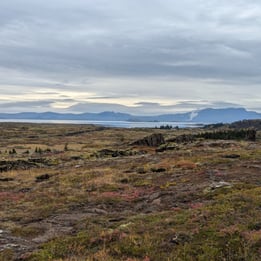
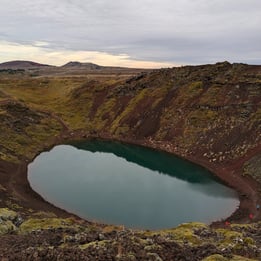
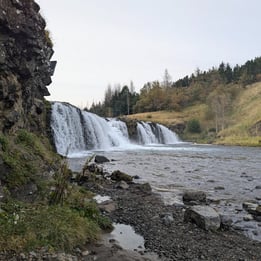
Afterward, I got back into the car and drove to my next destination in central Iceland: Thingvellir. Thingvellir is a national park that not only features two waterfalls but also holds historical significance for the Vikings. The word “Thing” derives from the word for “assembly,” and “vellir” means “meadows.” This site was where the leaders of Icelandic tribes gathered to establish laws and pass judgments.
I walked along towering rock walls, making my way through the cliffs toward one of the waterfalls. Along the path, there were information boards providing historical context. For example, this was also a place where outlaws were executed. Yep, not exactly a cheerful fact, but it’s an interesting tidbit nonetheless.
After walking for a while, I finally reached what was arguably the most beautiful waterfall of my trip so far: Öxarafoss. Taking a photo was no easy task since the area was packed with tourists. However, the wait was worth it, as I managed to capture a stunning shot.
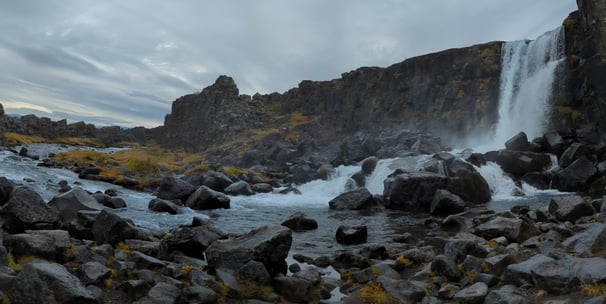


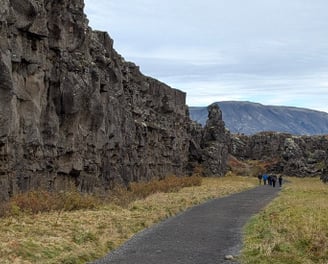
Öxarafoss
Thingvellir
My second-to-last stop of the day was Porufoss, a waterfall located a bit off the beaten path from Thingvellir. Not a single soul was there, and I climbed down the rocky wall to get closer to the magnificent waterfall. About 20 meters away from the cascade, it became nearly impossible to see clearly as the mist from the water filled the air. I can definitely recommend taking the time to visit this spot!
After Porufoss, I had only one destination left for the late afternoon: I absolutely wanted to experience the hot springs—and there are plenty of those in Iceland. I set out for Reykjadalur Hot Spring, which is conveniently near my previous stop, Hveragerdi. I parked the car and eagerly began the trek to the hot springs. One important tip here: don’t forget to pay the parking fee. This is done via a QR code. At many parking lots in Iceland, cameras record your license plate. If you forget to pay, some operators allow you to settle the fee via their app up to three days later. However, if you don’t pay, you risk a parking fine being passed on to your car rental company.
Now, back to the hot springs. If I had known how strenuous and challenging the hike would be beforehand, I might have chosen a different hot spring. The trail was a constant mix of uphill and downhill sections. For avid hikers, this is probably a dream; for me, it was more like a nightmare. Every time I hoped the springs would be just over the next hill, another climb appeared. I crossed streams, saw distant waterfalls, and kept praying to reach my destination soon. After a good 45 minutes of intense cardio training, my prayers were finally answered—the hot springs came into view.
I didn’t waste any time and quickly tested the water with my toes before jumping in. It’s worth noting that the water temperature isn’t consistent everywhere—some spots were freezing cold, while others were boiling hot. After some searching, I found the perfect place to relax and enjoy my well-deserved break. Was the hike worth it? Absolutely. While I did curse the trail quite a bit, the experience was ultimately rewarding—how often do you climb a 400-meter hill just to soak in warm water surrounded by freezing temperatures?
After spending some time in the water, it was time to head back to the hostel. Once I arrived that evening, I cooked dinner while other backpackers gradually joined me in the common area. Among them was the “snorer” from the previous night—her name is Stefanie, and she’s from the U.S. No wonder she had slept so soundly; as it turns out, this was her eighth trip to Iceland! Crazy, I thought, but her enthusiasm for the country made perfect sense.
Of course, one might argue that the weather in Iceland isn’t always ideal, which is partly true, but the stunning landscapes more than make up for it. Sometimes I struggle to put into words how Iceland makes me feel. If I had to describe it, I’d say it’s a rugged terrain with breathtaking scenery, somewhat reminiscent of Monument Valley in the U.S.—but greener and without the sand.
Stefanie shared many insider tips about lesser-known places in Iceland that most tourists never get to see. She even wrote down a list for me to explore the next day. Before heading to bed, we decided to take a late-night walk through the small village and talked about life’s many topics. Our main goal was to see the northern lights, but unfortunately, luck wasn’t on our side that evening. Slightly disappointed, we returned to the hostel, where I mentally prepared myself for the adventures awaiting me the next day.
Porufoss & Hot Springs
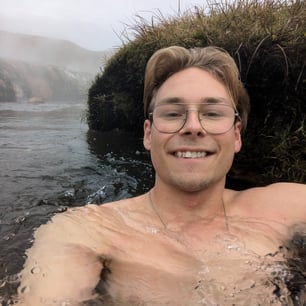
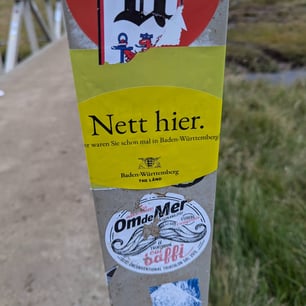
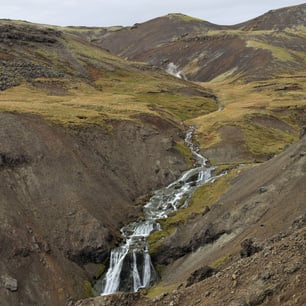

Day 2: Seljalandsfoss, Geysir, Plane Wreck, and Gullfoss
The sun rose, marking the beginning of my second day in Iceland. My main destination for the day was Gullfoss, but I planned to visit several fascinating hotspots along the way. Stefanie had recommended a few must-see sights, and by the end of the day, I had covered an impressive 450 km by car.
My first stop was Seljalandsfoss, an awe-inspiring waterfall cascading from a height of 30 meters. It took me about an hour to get there. From afar, I could already see towering cliffs with smaller streams flowing down their sides. Shortly after, I arrived at my first highlight of the day. Even from a distance, the waterfall was striking, so I quickly started looking for a parking spot to see it up close. Unfortunately, all the parking spaces nearby were taken—how frustrating! Instead, I parked a bit further away on a free lot, just a five-minute walk from Seljalandsfoss, and made my way there on foot.
Seeing this waterfall up close was breathtaking. You don’t just get to admire it from the front; there’s also a path that allows you to walk behind it through a small alcove. Be warned, though: it’s quite wet and slippery back there. Seljalandsfoss is a must-add to your itinerary.
While you’re in the area, don’t miss the neighboring waterfall, Gljúfrabúi. Be sure to allow some extra time, as there were long lines of people waiting for their turn to take photos. Why? This waterfall is located inside a cave, and to reach it, you have to climb through two narrow rock passages and over some stones. Inside the cave, there’s a large rock where many travelers posed for photos. The backdrop was stunning, making it a highly sought-after spot for unique pictures.
You might recall my earlier mention of how my lightweight jacket wasn’t the best choice for Iceland. By the time I left Seljalandsfoss, I was already soaked, but I decided to visit Gljúfrabúi anyway. Inside the cave, tiny droplets of water sprayed everywhere—of course, all over me as well. I emerged completely drenched. If only I had thought to bring a waterproof jacket! At least I managed to capture some amazing shots to share with you.
Seljalandsfoss & Gljufrabui
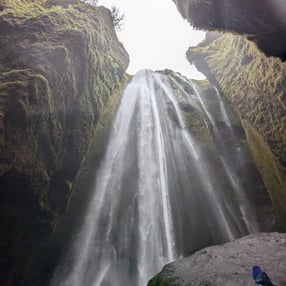
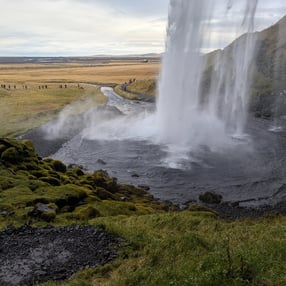
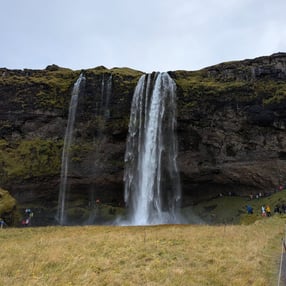
My Second Stop: The Douglas DC-3 Plane Wreck
My second stop of the day was the site of the Douglas DC-3 plane wreck – a true hidden gem. Hardly anyone knows about this location, as it isn’t marked on any map. As a result, it’s free from the crowds that flock to many other attractions. When I reached the remote site, the wreckage of the plane lay before me – a fascinating sight. But how did it get there? In 1973, the U.S. military aircraft had to make an emergency landing on the Sólheimasandur plains after running out of fuel. The landing was so difficult that the plane broke into two pieces. Thankfully, all seven crew members survived. After a brief exploration and a few photos, I continued my journey toward my main goal of the day: Gullfoss.
On to Gullfoss – via the Forbidden F-Road
After another hour and a half of driving east through desolate terrain, I encountered my nemesis: the forbidden F-Road. Up until this moment, I didn’t know that my small rental car wasn’t allowed on these roads. However, with my destination so close, I decided not to turn back. I cautiously drove at a steady 20–30 km/h while SUVs effortlessly overtook me. It quickly became clear why a four-wheel-drive vehicle is essential for these roads.
Finally, I arrived at the top, where I found some shops, restrooms, and a large parking lot. For lunch, I treated myself to a warm bowl of lamb soup – a much-needed refreshment. Energized, I set out to see Gullfoss.
The Stunning "Golden Waterfall"
“Gullfoss” translates to “Golden Waterfall.” I can’t tell you exactly why it’s called that, but I can say it left me utterly awestruck. It’s the largest waterfall I’ve ever seen. Tons of water crashed into the depths every second, and the current was so strong it seemed impossible for anyone to even think about swimming there.
The view was breathtaking: the thunderous cascade of water and the clear horizon above the waterfall gave the impression of staring into infinity. In my travel journal, I later wrote: “It felt like gazing at the end of the world.”
Douglas DC 30 & Gullfoss
Provide a short description of the gallery, highlighting key things.
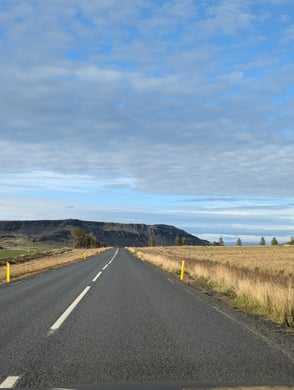
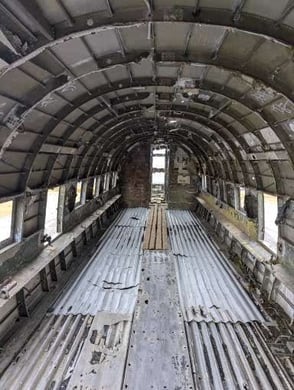
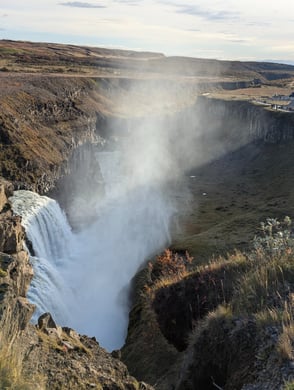
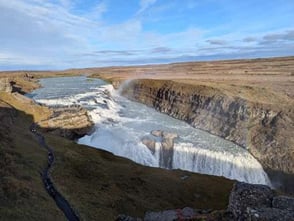
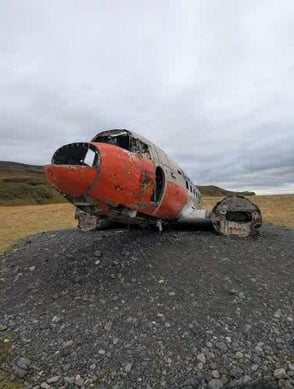






The Journey Back: Visiting the Geysers
This part of my trip was nearing its end, and I headed back toward the F-Road. On the way, there was one more thing I absolutely had to see – something you’ve surely heard of: the geysers. Since they’re not far from Gullfoss, this makes for a perfect quick stop.
I parked in front of a small restaurant and walked up a gentle hill where the geysers are located. A small crowd had already gathered, sitting on benches and eagerly waiting for the next eruption. I joined them and waited with growing anticipation.
One minute passed, then three, then five – until suddenly, the water began to bubble, and the steam in the air grew denser. Moments later, a massive jet of water shot up from the geyser, soaring about 60 meters high. A few droplets landed on my skin – but don’t worry, the water cools quickly in the air, so it doesn’t cause any harm.
This incredible show repeated itself at irregular intervals. At the geysers I visited, eruptions occurred every five to ten minutes. So take your time here, find a good spot, and enjoy the natural spectacle.
Geysers
Geysers erupt when groundwater heated by magma turns to steam. Pressure builds until steam and water burst through a surface vent, repeating the cycle as water refills.
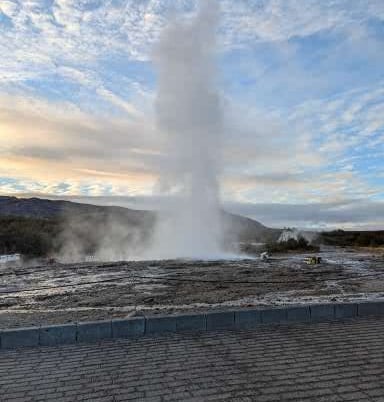
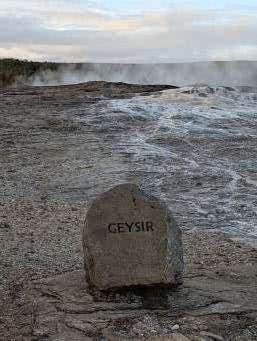

That was the second day of my trip, and now I, too, was heading back to the hostel, exhausted. As soon as I arrived, I was greeted by three new faces: a German couple and a Canadian grandfather. While I was preparing my dinner, I chatted with the new roommates. The Canadian, in particular, told me fascinating stories from his youth, like how he moved from Germany when he was 18. What I found even more remarkable, however, is that at 78, he’s still traveling. So, you're never too old to travel and should always try new things. Do what you love. If it's traveling, then travel. If you've always wanted to learn an instrument, then learn one. Of course, I understand that general health plays a very important role in many things. And given that I’m 24 and neither have serious health issues nor lost my youthful recklessness, it’s easier said than done. But still, I found it really impressive that he travels alone at his age. And so, the day was gradually coming to an end, but not without another glance at the sky. Unfortunately, I didn’t see the Northern Lights again this time.
Day 3: National Museum of Iceland, Perlan Museum & Hallgrímskirkja
On my last day, I headed to Iceland's capital: Reykjavik. The day before, I had made a small list of things I absolutely wanted to see. The capital of every country typically represents its culture – and I wanted to learn much more about it. Reykjavik invites exploration with its many museums and architectural landmarks. So, I made my way to the National Museum of Iceland. After what felt like 10 years without a museum experience, it was a refreshing change. I went in and paid an entrance fee of about 15€, with discounts available for students and seniors. The museum itself has three floors, each showcasing different periods in Iceland’s history. From the first Vikings to modern civilization and Iceland’s independence, it covers it all. It was fascinating to learn about the many historical facts of Iceland that you don’t often hear elsewhere. I was particularly drawn to the Viking Age, with Viking graves, a lifelike replica of a Viking house, and the Christianization of Iceland. A lot of love and effort has gone into the museum, which I truly admired.
Next on my list was the Perlan Museum, which impressed with its interesting architectural design from afar. Compared to the National Museum of Iceland, this museum focuses much more on the complex ecosystem, its animals and plants, the creation of Iceland, and even features an exciting Northern Lights and lava show. The entrance fee was a bit higher, around 40€. Once inside, I was given a wristband to access certain rooms. I had booked everything except the outdoor terrace, which offers a view of the whole city of Reykjavik. So, I walked through the various rooms and learned a ton about Iceland. A lot of effort was made here to convey knowledge (in a playful way) through technology. I passed through icy caves and even an artistic studio. There was truly something for everyone, but a must-do in this museum is definitely the Northern Lights show. This is located on the top floor in the dome, which you could already spot from the outside. I entered the vast room, surrounded by thousands of small screens, all positioned 360° around me. You sit down and enjoy the show. It covers the formation of the Northern Lights and some historical aspects – it was simply breathtaking to learn about our galaxy on such a scale. Followed by some Northern Lights scenes and serene music, everyone could easily get lost in this spectacle. After 15 minutes, the show was over, and so was my day trip.
National Museum of Iceland & Perlan Museum
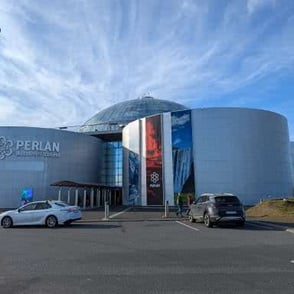
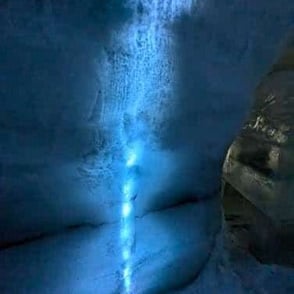
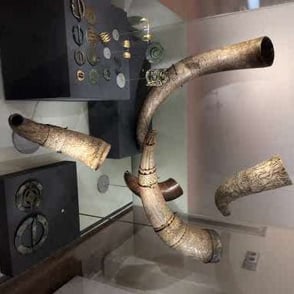
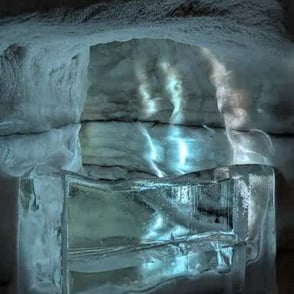
But not without seeing one more truly fascinating building: Hallgrímskirkja.
Hallgrímskirkja is a church with a modern architectural design. Its distinctive feature is the lava columns, which also appear in Iceland’s natural landscape. Because of this, the church has become an iconic landmark of Reykjavik. In front of the church stands a statue dedicated to the Viking explorer Leif Eriksson. If you've seen Vikings: Valhalla, you’ll know exactly who this is. Leif is credited with discovering the coast of North America, known as Vinland (today’s Newfoundland), around the year 1000 AD, making him 500 years ahead of Christopher Columbus. The statue commemorates the early contact between Europe and North America. It was donated in 1930 by the United States to mark the 1000th anniversary of the Icelandic Althing (the oldest parliament in the world). It symbolizes the friendship between the two nations and Iceland’s historical significance during the Viking Age.
Hallgrímskirkja
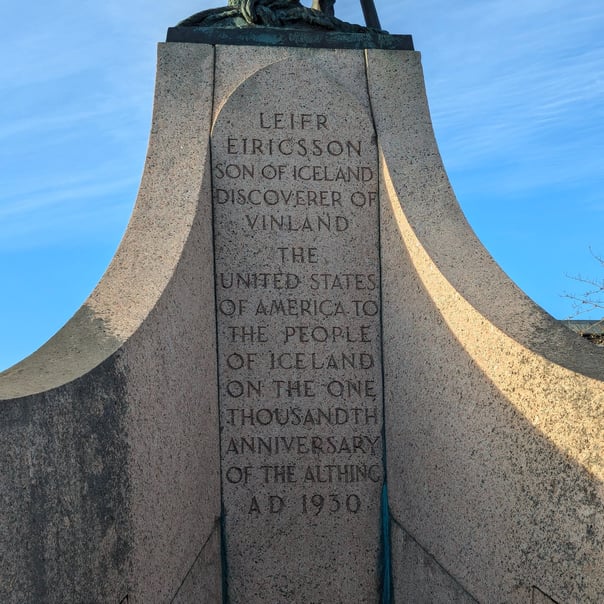
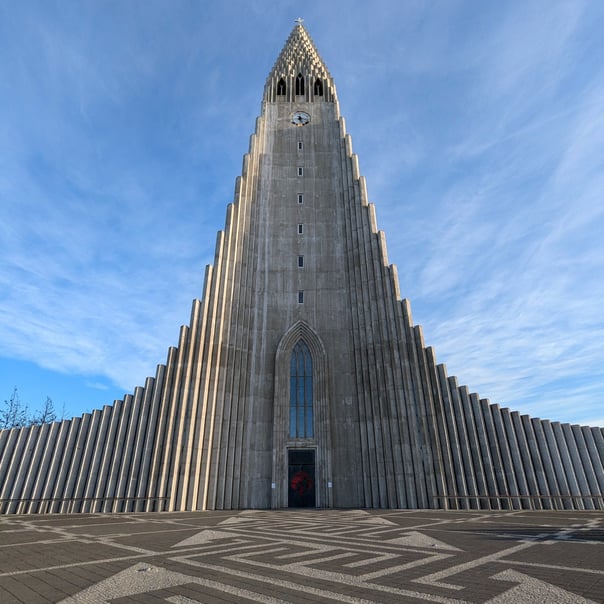
The sunset was drawing closer, and it was time for me to start my journey back to Eyrarbakki. Passing countless mountains and waterfalls, I arrived at the hostel an hour later. I bought myself a beer (which was quite pricey at €6) and sat outside on a wooden bench to watch the orange-tinted sunset on the horizon. While doing so, I reflected on my entire time in Iceland. It truly was an experience I would wholeheartedly recommend to anyone, whether traveling alone or with friends.
What I learned for myself is that traveling alone isn’t as intimidating as it might initially seem. In fact, it often forces you to engage with other people. While it might feel a bit strange at first, over time you learn to trust your intuition and abilities. Moments of solitude with your thoughts can also be a great opportunity to process them. We live in a world where we often escape the everyday hustle and suppress our thoughts. Yet we should allow ourselves the chance to pay attention to them and ask: Who am I really, and what do I want for myself right now?
It might sound like a simple question for some, but when you delve deeper, you’ll often find that the answer isn’t what you expected.
I’m grateful for all the peaceful moments, the awe-inspiring sights, and the fun evenings I got to experience.
After the sun had set, I had a few last conversations with Stefanie before heading to bed. At 2 a.m., I got up and made my way back to the airport, where the car rental return center is located. I filled up the car with fuel and was shocked at the charges on my credit card. I had always paid more than what the pump indicated. But how could that be?
In Iceland, the amount you select at the pump is initially charged to your credit card. After a few days, the actual amount for the fuel you used is adjusted. So, don’t worry about it!
Afterward, I returned the car. Luckily, staff were already there to take it back, and there were no issues! I was fortunate that no data was reviewed and that I hadn’t caused any damage to the undercarriage while driving on the F-roads. Relieved, I went into the airport, waited for my flight, and flew back to Berlin.
Thank you so much for reading this far; it truly means a lot to me. :)
Photo Dump
